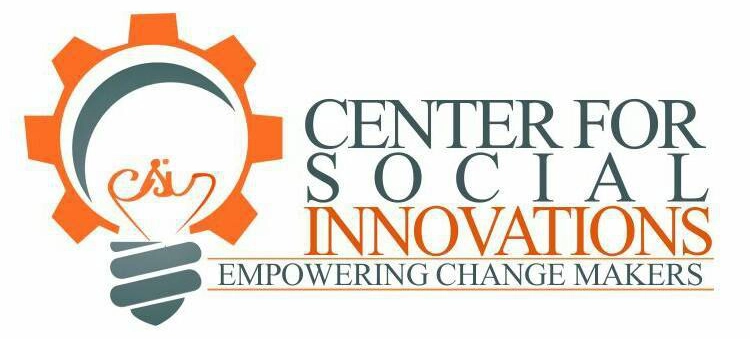Innovation and environmental sustainability are deeply linked especially when the youth are at the centre of development. Insights drawn from the Youth Innovation Circles (YIC) program provide not only a map of entrepreneurial growth in Ghana but also a compelling argument for integrating environmental consciousness into the very fabric of youth-led innovation ecosystems. At the heart of the data lies an undeniable truth: for innovation to be truly sustainable, it must extend its roots beyond economic metrics and embrace ecological stewardship. This calls for a holistic redesign of how we support and structure youth entrepreneurship one that incorporates environmental outcomes, equity, and community inclusion as central pillars.
Youth Entrepreneurship as a Vehicle for Environmental Progress

The dominance of sectors such as agriculture, transportation/logistics, and manufacturing in the YIC ecosystem offers a powerful opportunity to align innovation with environmental impact. These sectors intersect directly with issues of climate resilience, carbon emissions, waste generation, and biodiversity. With agriculture alone representing 28% of the innovation activities, there is significant room to embed sustainable agricultural practices, regenerative land use, and eco-agro technologies within youth-led startups.
Furthermore, the challenges faced by young entrepreneurs particularly funding, marketing, and limited technical skills mirror those seen in the green innovation space. Financial barriers hinder access to sustainable technologies and climate-smart resources. Technical knowledge gaps prevent the implementation of clean energy solutions, circular production models, or waste reduction strategies. These aren’t isolated business development hurdles—they are symptoms of a deeper systemic issue where economic and environmental development are treated as separate domains.
Community Engagement and Environmental Stewardship
Community support, a key component of youth entrepreneurial success, offers rich ground for environmental education and behavioural change. According to the report, nearly 88% of entrepreneurs rated their communities as at least “somewhat supportive,” but the transition from passive support to active environmental collaboration is essential. The path forward lies in fostering community-driven green entrepreneurship. Local “shop eco-local” campaigns, circular economy pilots at the community level, and climate-smart cooperative models can drive both economic empowerment and ecological protection. When community investment mechanisms are aligned with green innovation, such as local climate funds or waste-to-income ventures, young entrepreneurs can be empowered as environmental changemakers.
Transforming Innovation Hubs into Green Accelerators

Innovation hubs must evolve from digital productivity centres into holistic green accelerators. These hubs should offer not only business development services but also access to environmental datasets, sustainability design tools, renewable energy labs, and circular economy incubators. Currently, many hubs are seen primarily as neutral spaces; they must become green engines.
This transformation can occur through:
- Strategic partnerships with environmental institutions to provide access to real-time climate data and sustainability toolkits.
- Embedding climate resilience curricula in training sessions covering topics like life cycle assessments, ESG reporting, carbon footprinting, and sustainable material sourcing.
- Offering green startup capital conditioned on environmental deliverables such as pollution reduction, biodiversity protection, or GHG mitigation.
Building Environmental Governance into Stakeholder Relationships
As innovators, building and maintaining relationships with stakeholders is not just a matter of program implementation it is foundational to achieving sustainability outcomes. The YIC data confirms that youth innovation ecosystems are most successful when mentorship, community backing, and institutional collaboration converge.
Embedding environmental governance principles into these relationships can take the form of:
- Environmental clauses in mentorship agreements requiring mentors to promote sustainable business practices and advise on eco-efficiency.
- Cross-sector working groups among government, civil society, and youth to co-create green policy frameworks that encourage innovation.
- Eco-impact dashboards that stakeholders co-develop to track environmental benefits of youth-led projects.
Integrating Environmental Impact Tracking into Youth Innovation

To ensure entrepreneurship contributes meaningfully to national environmental goals, we must integrate environmental indicators into every phase of the innovation lifecycle. This means going beyond revenue and job creation to also track energy use, resource intensity, and ecosystem impact.
Key strategies include:
- Developing an Environmental MEL (Monitoring, Evaluation & Learning) Framework:
- Track carbon offsets, waste diversion rates, water use efficiency, and biodiversity impact.
- Incorporate pre-and post-implementation eco-surveys into business reporting.
- Incentivizing Environmental KPIs:
- Offer milestone-based grants to youth enterprises that meet verifiable environmental performance thresholds (e.g., X tons of CO₂ reduced, Y hectares reforested).
- Building Environmental Literacy into Mentorship and Training:
- Mandate eco-literacy modules in entrepreneurial training covering the UN SDGs, circular economy principles, and environmental compliance.
- Creating Environmental Performance Scorecards for Hubs:
- Evaluate and compare hubs on green performance metrics including renewable energy usage, waste minimization, and sustainable procurement practices.
- Piloting Green Innovation Labs:
- Launch specialized incubators within existing hubs that target clean energy, e-waste recycling, green building materials, and nature-based solutions.
- Leveraging Youth-led Climate Innovation Competitions:
- Regularly organize pitch sessions focused on solutions for plastic pollution, sustainable food systems, urban greening, or community climate adaptation.
- Aligning with National and Global Sustainability Agendas:
- Design youth entrepreneurship programs to directly support Ghana’s NDCs (Nationally Determined Contributions), the Green Ghana initiative, and the African Union Agenda 2063.
Final Thoughts
Youth entrepreneurship isn’t just a solution to unemployment it is the front line of climate action and environmental justice. The YIC dataset is clear: the foundation is laid, but the path forward requires deliberate environmental integration. From hubs to funding models, from mentorship to policy frameworks, the ecosystem must be recalibrated to prioritize green outcomes. In a time of accelerating climate crisis and ecological decline, youth-driven innovation must rise as a force for regeneration not only of economies but of ecosystems. Ghana stands at the threshold of becoming a continental model for youth-led sustainable development. But only if we build now, with the Earth in mind.
Written by: Andrew Osei Owusu Sekyere
Environment and Sustainability Associate

